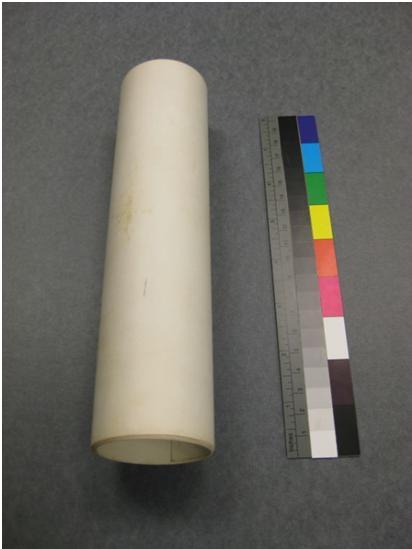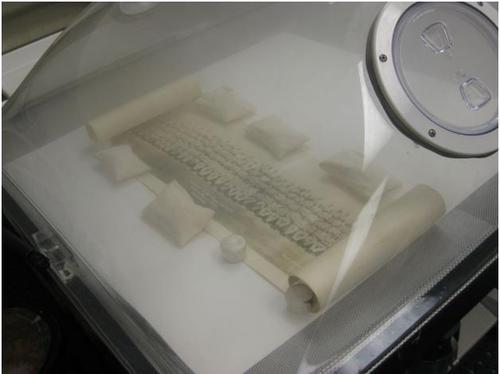by Felicity Corkill, Associate Conservator, and Kevin Schlottmann, Processing Archivist, Center for Jewish History
All physical objects change over time. Whether accelerated through exposure to light, changes in temperature and humidity, poor handling, or just natural decay, things break down. At the Center for Jewish History’s Collection Management and Conservation Wing, we attempt to address some of this inexorable decay through good storage environment and housing. We also try to repair and maintain the treasured documents, photographs, books and other materials of the Center’s partners.
An interesting example of the type of work performed in the Werner J. and Gisella Levi Cahnman Preservation Laboratory is the flattening of documents and photographs. A previous owner of this long portrait photograph had rolled it for storage:

Once rolled in this way, the photograph cannot be unrolled without cracking the gelatin emulsion every few inches and irreversibly damaging the image. Unfortunately, a rolled photo will often exhibit this sort of damage, as people have previously attempted to peek inside. The proper way to treat such an item is to humidify and then flatten it. Humidification relaxes the gelatin emulsion and paper support that make up the photograph. This process is performed in a special chamber that allows a controlled amount of water vapor into an enclosed space.

As the photograph relaxes, it can be slowly unrolled until it is lying flat. Then it is placed between layers of blotting paper and weighted. After a couple of days, the item is dry and flat and can be viewed (and, in this case, eventually digitized as well). Additional repairs help stabilize the tears in the photograph. It is not perfect, as some damage is irreversible, but the photo can now be handled and viewed – a usable object once more.

This particular photograph is a portrait of Company A, 56th Signal Battalion at Fort Jackson, South Carolina, from August 9, 1941. One of the men who served in this company was Fred Lederman, a German Jew who arrived in the United States in 1940 and was promptly drafted into the Army and sent back to Europe to fight the Nazis. From the Leo Baeck Institute’s Prölsdorfer – Lederman Family Collection (AR 25554).


